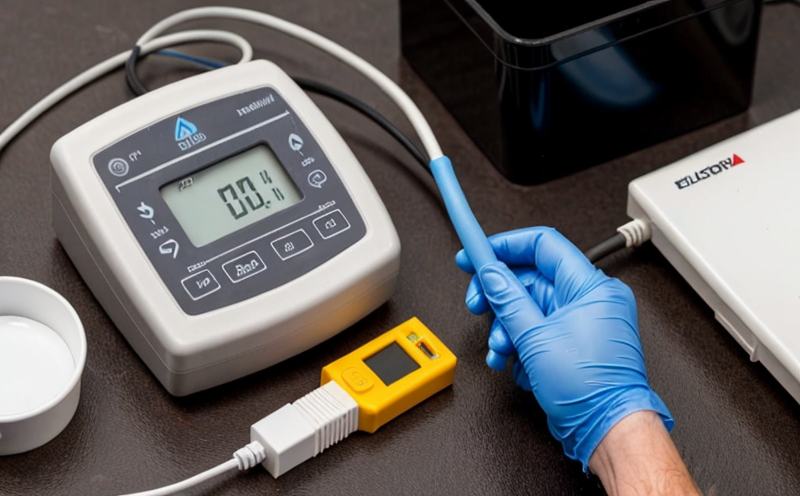GB T 22390 Electrochemical Testing of Metal Corrosion
The GB T 22390 standard provides a comprehensive framework for the electrochemical testing of metal corrosion. This method is widely used to evaluate the resistance and durability of metallic materials exposed to corrosive environments, especially in sectors where material integrity is critical.
The electrochemical technique measures the polarization behavior of metals immersed in an electrolyte solution. By applying a small current, it can quantitatively assess the cathodic, anodic, or mixed corrosion processes. This service ensures that manufacturers and quality managers have reliable data to improve product design and material selection for various applications.
In industrial settings like chemical plants, oil refineries, and marine environments, GB T 22390 is essential for assessing the long-term performance of metallic components. It helps in identifying potential corrosion risks early on, allowing for timely interventions and preventive measures.
The test involves several key steps: first, preparing the metal specimen under controlled conditions to ensure accurate results. Next, immersing the sample into an electrolyte solution while applying a constant current. The system monitors the changes in voltage and current over time to determine the corrosion resistance of the material. Finally, interpreting these data points according to GB T 22390 ensures compliance with industry standards.
This methodology is not only beneficial for quality assurance but also supports research and development efforts aimed at developing new materials that can withstand harsh corrosive conditions more effectively.
| Step | Action | Purpose |
|---|---|---|
| Sample Preparation | Clean, dry the metal specimen and apply a protective coating if necessary. | To ensure accurate measurement of corrosion resistance without external interference. |
| Electrolyte Solution | Select an appropriate electrolyte that mimics real-world conditions as closely as possible. | To simulate the environment where the metal will be used, enhancing test relevance. |
| Current Application | Apply a controlled current to the sample and record voltage changes over time. | To observe how the material behaves under stress conditions that mimic real-world scenarios. |
| Data Analysis | Analyze collected data according to GB T 22390 guidelines. | To ensure results are accurate, reproducible, and aligned with international standards. |
The electrochemical testing process is highly precise and offers valuable insights into the corrosion behavior of metals. For industries dealing with corrosive environments, this service is crucial for maintaining operational efficiency and ensuring safety standards are met.
By leveraging GB T 22390, organizations can identify potential weaknesses in their materials early on, thereby reducing maintenance costs, extending equipment lifespan, and enhancing overall product reliability.
Applied Standards
- GB T 22390
- ISO 1461:2005 - Electrochemical Methods for Testing Corrosion Resistance of Metals and Alloys
- ASTM G58-17 Standard Guide for Electrochemical Measurement Techniques
The combination of these standards provides a robust framework that ensures consistent and accurate results across different testing environments.
Quality managers, compliance officers, R&D engineers, and procurement teams can rely on GB T 22390 to ensure they are meeting the highest industry standards. This service not only supports regulatory compliance but also drives innovation in material science by providing actionable data for improvement.
Scope and Methodology
The scope of GB T 22390 electrochemical testing is broad, covering various types of metals used across different industrial sectors. This service is particularly useful for evaluating the corrosion resistance of materials in harsh environments such as marine applications, offshore drilling rigs, and chemical processing plants.
| Material Type | Applications |
|---|---|
| Copper Alloys | Marine structures, water treatment facilities |
| Zinc-Based Alloys | Oil and gas pipelines, chemical storage tanks |
| Iron-Base Alloys | Petrochemical plants, desalination plants |
The methodology involves several critical steps:
- Specimen preparation: Ensure the metal sample is clean and free from contaminants.
- Solution selection: Choose an electrolyte that closely mimics the real-world environment where the material will be used.
- Current application: Apply a controlled current to the specimen for a set duration.
- Data collection: Measure voltage and current changes throughout the test period.
- Data interpretation: Use GB T 22390 guidelines to analyze collected data accurately.
This comprehensive approach ensures that the results are not only reliable but also actionable, providing valuable insights into the corrosion resistance of various metallic materials.
Why Choose This Test
- Provides precise measurement of metal corrosion behavior.
- Helps identify potential weaknesses in material selection early on.
- Saves costs by preventing premature failures and extending equipment lifespan.
- Aids compliance with international standards and regulations.
- Supports R&D efforts to develop new, more resistant materials.
- Offers actionable data for quality assurance and process improvement.
The electrochemical testing of metal corrosion is an indispensable tool in maintaining operational efficiency and ensuring safety across various industries. By choosing this test, organizations can stay ahead of potential issues before they escalate into costly problems.





